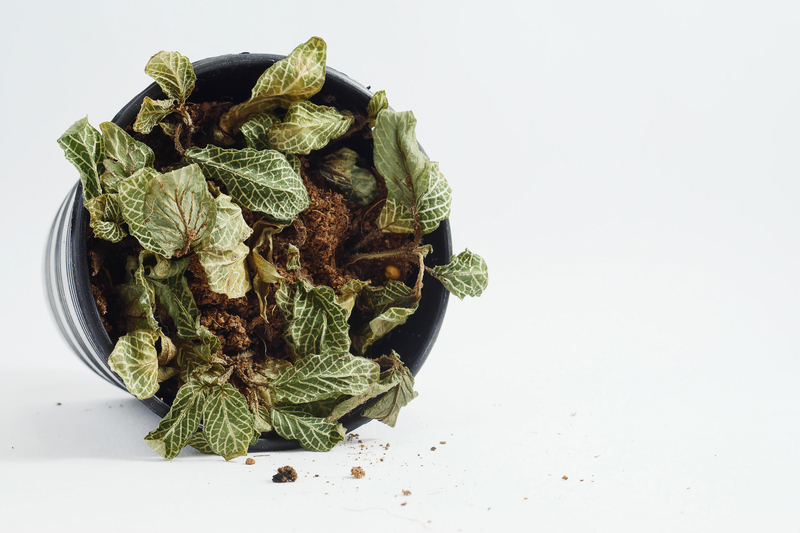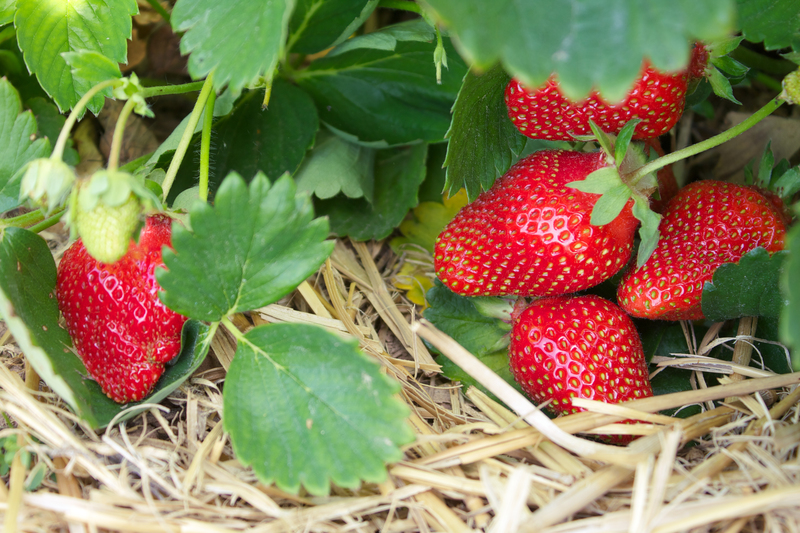Designing a Harmonious Seating Area for Your Garden
Posted on 26/08/2025
Designing a Harmonious Seating Area for Your Garden
Creating a harmonious seating area in your garden is much more than simply placing a bench or patio set outside. It's about curating a balance between beauty, comfort, and functionality, ultimately transforming your outdoor space into a sanctuary for relaxation and social gatherings. Whether you envision a tranquil nook surrounded by lush foliage or a vibrant social spot for alfresco dinners, the right design can make all the difference. In this guide, discover everything you need to know to craft the perfect outdoor seating area that is both inviting and in harmony with your garden surroundings.
Why a Well-Designed Garden Seating Area Matters
A garden seating area is an extension of your living space. With intentional design choices, you can create an environment that enhances well-being, encourages relaxation, and promotes connection with nature. Good design supports:
- Mental Wellness - Exposure to greenery reduces stress and encourages mindfulness.
- Social Engagement - Thoughtful arrangements encourage gathering of friends and family.
- Functional Usage - Whether for morning coffee, afternoon tea, or evening work, a comfortable spot ensures versatility.
- Aesthetic Appeal - Adds personality and charm, raising curb appeal and property value.

Elements of a Harmonious Garden Seating Arrangement
Blending style, functionality, and nature is key. A harmonious garden space adapts to the seasons, caters to your needs, and complements the landscape. Below, examine the vital components to consider when designing your ideal outdoor seating oasis.
1. Assessing Your Garden's Layout
Before selecting furniture or accessories, spend time assessing your garden's unique characteristics. Take note of:
- Size: Measure the available space to determine what can fit comfortably while allowing movement.
- Sunlight: Track the path of sunlight and shade throughout the day to identify the best location for seating.
- Views: Position your seating to frame attractive vistas--flower beds, water features, or distant hills.
- Privacy: Use hedges, screens, or trellises to create a more secluded atmosphere if needed.
- Access: Ensure easy access from the house and visibility of your garden's main features.
2. Choosing the Right Garden Seating
Seating options are abundant; your selection will depend on the purpose and style you envision. Some popular options include:
- Benches: Classic and versatile, perfect along pathways or beneath trees for contemplative moments.
- Lounge Chairs: Ideal for sunbathing or relaxed reading in tranquil corners.
- Outdoor Sofas: Offer maximum comfort, turning patios into outdoor living rooms.
- Dining Sets: Essential for those who love al fresco meals and hosting dinner parties.
- Hammocks and Swing Seats: Inject whimsy and relaxation, best for quieter zones.
Choose materials that withstand your climate: all-weather wicker, powder-coated metal, teak, or resin. Opt for cushions with removable, weather-resistant covers to ensure longevity and easy care.
3. Creating Flow and Balance with Garden Layout
A harmonious seating area must integrate seamlessly with the rest of your garden. Consider:
- Symmetry and Asymmetry: Reflect the garden's overall style--formal gardens benefit from symmetrical arrangements, while cottage gardens thrive with relaxed, asymmetric setups.
- Focal Points: Arrange seating around key elements, such as a fire pit, water feature, or mature tree.
- Paths: Use meandering or direct paths to lead the eye and foot traffic naturally toward seating areas.
- Levels: Utilize terraces, decks, or platforms to demarcate distinct zones and add visual interest.
Enhancing Comfort and Ambiance in Your Outdoor Space
Beyond mere furniture, elevate your outdoor seating area with layers of comfort and sensory appeal. Addressing these details will not only make your garden seating more inviting but also ensure someone always wants to linger.
Incorporating Shade and Shelter
Too much sun or unexpected rain can drive you indoors. Incorporate:
- Pergolas or Gazebos: Permanent structures for substantial cover and style.
- Parasols and Shade Sails: Flexible, affordable, and easy to adjust according to the sun's angle.
- Trees and Tall Plantings: Living shade that changes through the seasons, improving microclimate and biodiversity.
Adding Softness with Textiles
Comfort is key in a garden seating area. Layer your furniture with:
- Cushions: Weatherproof, colorful, and easily swapped for a seasonal refresh.
- Throws and Blankets: Warmth for cooler evenings and a cozy aesthetic.
- Rugs: All-weather options anchor the space and add underfoot comfort.
Subtle Lighting Solutions
Outdoor lighting extends your enjoyment into the evenings, adds drama, and highlights focal points. Consider:
- String Lights: For a starlit atmosphere and festive mood.
- Lanterns and Candles: Portable and atmospheric, ideal for low, soft light.
- Solar Uplights: Sustainable and no wiring required, perfect for highlighting paths or features.
Embracing Natural Elements for a Unified Look
The most enchanting garden seating areas feel like natural outgrowths of the landscape. Achieve harmony by:
- Using Natural Materials: Stone, wood, and rattan echo the textures found in nature.
- Plant Integration: Allow climbing plants or overhanging branches to create canopies and privacy.
- Color Palette: Choose hues that blend with your surroundings--greens, earth tones, and natural pastels work well.
- Incorporating Water: Fountains, ponds, or birdbaths bring movement, sound, and wildlife.
The Role of Plants in Creating a Harmonious Atmosphere
Plants are the heart and soul of any garden, so let them shape your seating retreat. When designing your garden seating area, consider:
- Layered Planting: Use low groundcovers, medium perennials, and tall shrubs or trees for a sense of enclosure.
- Scented Varieties: Surround seats with lavender, roses, jasmine, or mint for a multi-sensory experience.
- Seasonal Interest: Select species for blooms, berries, and foliage that provide year-round beauty.
- Wildlife Friendly Plants: Attract pollinators and birds, adding vitality and movement.
Personalizing Your Outdoor Seating Area
Transform your garden retreat into a unique expression of personality and style. Try these creative touches:
- Art and Sculptures: Place weatherproof statues, windchimes, or mosaics for artistic flair.
- Bespoke Signage: Use hand-painted signs for pathways or quotes that inspire relaxation.
- Mixing Styles: Combine vintage, rustic, or contemporary pieces for visual contrast.
- DIY Projects: Pallet sofas, mosaic tables, or homemade planters bring character and a personal story.
Maintaining Your Garden Seating Space
A harmonious seating area needs regular upkeep to remain welcoming. Here's how to ensure durability and ongoing beauty:
- Clean Surfaces: Regularly brush or hose down furniture and sweep floors to prevent dirt buildup and damage.
- Protect Furniture: Use weather covers or store cushions during harsh weather.
- Prune Surrounding Plants: Trim branches and hedges to keep the space open and light.
- Seasonal Refresh: Replace tired textiles or repaint structures as needed.
Tips for Small Garden Seating Solutions
Even a compact garden can boast an inviting retreat. Employ these strategies:
- Foldable Furniture: Saves space when not in use and offers flexibility.
- Multi-functional Pieces: Benches with storage or tables that convert to seating.
- Vertical Gardens: Wall planters or climbing plants maximize greenery without sacrificing floor space.
- Mirror Placement: Reflects light and gives an illusion of more space.
Eco-Friendly Choices in Garden Seating Design
Design a seating area that respects the environment by:
- Upcycling Materials: Reuse existing furniture or reclaimed wood for a sustainable approach.
- Native Plants: Choose flora that requires less water and maintenance.
- Natural Finishes: Use oils and stains that are non-toxic and biodegradable.
- Energy-Efficient Lighting: Opt for solar or low-voltage options.

Frequently Asked Questions about Garden Seating Design
How do I choose the best location for my garden seating area?
Observe the movement of the sun, the level of privacy, proximity to the house, and the most scenic viewpoints in your garden. Ideally, select a spot that offers both comfort and beauty, while being practical for daily use.
What materials are best for durable outdoor furniture?
Teak, eucalyptus, powder-coated metal, all-weather wicker, and high-quality synthetic resins are all excellent choices. Ensure the materials are rated for outdoor use and resistant to rot or rust.
How can I make my garden seating area feel more private?
Plants, trellises, outdoor curtains, and lattice panels all provide visual screening. Tall grases and dense shrubs are also effective for natural privacy barriers.
Conclusion: The Art of Creating a Tranquil Garden Seating Sanctuary
Crafting a harmonious garden seating area is a journey in creativity, observation, and personal style. By understanding your garden's layout, choosing the right materials and furnishings, fostering comfort, and enhancing the connection with nature, you can create a timeless haven for relaxation and conversation. Remember to infuse your retreat with personal touches, maintain its beauty, and adapt the space to your changing needs. Your garden--no matter its size--holds the potential to become your favorite outdoor refuge.
Ready to start designing? Dive into your garden, let its opportunities inspire you, and begin creating your perfect harmonious seating area today!

